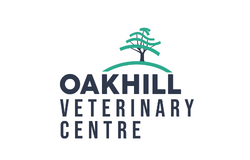CASE STUDY: KISSING SPINES
This 6-year-old WB mare first presented to vet Nikki in May, with a short history of bucking, napping and increasing resistance to going forward.
On examination, severe pain and spasm was noted over the back. No lameness was observed, but there was no transfer of energy from the hind limbs through the back, which was lacking in flexion. The horse tended to strike off incorrectly into canter or become disunited in this gait.
Gastroscopy revealed mild ulceration. Radiography revealed the presence of significant impingement of the dorsal spinous processes (colloquially known as ‘kissing spines’) of the vertebrae in the region under the seat of the saddle.
Given the potential for both gastric ulcers and kissing spines to cause the symptoms exhibited, the gastric ulcers were initially treated with Omeprazole and confirmed to be resolved one month later. This meant that treatment of the kissing spines could commence.
The X-ray findings in this horse can be present in clinically normal horses and in horses where kissing spines have been found to be the cause of pain, treatment can unfortunately fail to resolve an established pattern of evasive behaviour. Therefore, to be certain that this was the cause of the performance issues in this particular horse and that resolving the pain did indeed result in the horse performing normally, medical management was initially opted for.
This involved injecting the affected region of the back with steroid followed by a rehabilitative exercise programme and physiotherapy. Sometimes, medical management alone is enough to return horse to – and maintain them in comfort for their intended use.
Conversely, as was the case with this mare, the improvement is only short lived, and the performance issues return as the effects of the steroid start to wear off. ECVS surgeon Rosie therefore proceeded to surgically reduce the dorsal spinous processes, so they were no longer in contact. This procedure is known as a dorsal wedge ostectomy – amazingly, it can be carried out under standing sedation!
Once surgery was completed, the mare returned home to allow time for the surgical site to heal before an intensive non-ridden rehabilitative exercise programme was instigated (promoting correct muscling over the back).
Pre and post surgery
Ridden exercise was then carefully reintroduced (allowing the horse time to understand that ridden activity was no longer painful), and as you can see from the short video clips, the transformation from unhappy an unhappy, tense horse to a settled horse with powerful movement is remarkable.
